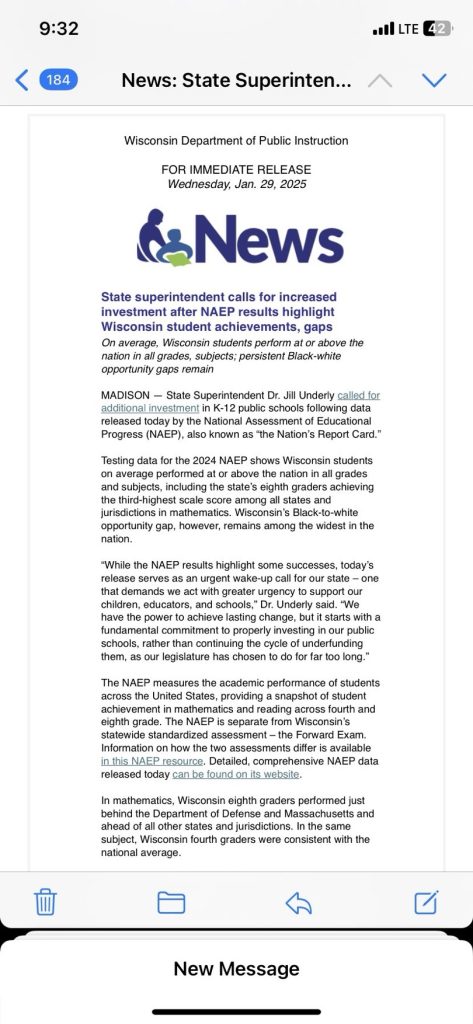More than 450,000 fourth and eighth graders, selected to be representative of the U.S. population, took the biennial reading and math tests between January and March of 2024.
Depressed student achievement was pervasive across the country, regardless of state policies or instructional mandates. Student performance in every state remained below what it was in 2019 on at least one of the four reading or math tests. In addition to state and national results, the NAEP report also lists the academic performance for 26 large cities that volunteer for extra testing.
An ever-widening gap
The results also highlighted the sharp divergence between higher- and lower- achieving students. The modest progress in fourth grade math was entirely driven by high-achieving students. And the deterioration in both fourth and eighth grade reading was driven by declines among low-achieving students.
“Certainly the most striking thing in the results is the increase in inequality,” said Martin West, a professor of education at Harvard University and vice chair of the National Assessment Governing Board, which oversees the NAEP test. “That’s a big deal. It’s something that we hadn’t paid a lot of attention to traditionally.”
——
2024 Demographically Adjusted NAEP Scores:
Wisconsin: 31st in reading, 17th in mathematics (averaging ranks, 🙃)
top R: LA, MS, MA, IN, GA, KY, CO, TX, SC, CT
top M: MS, LA, MS, TX, IN, GA, NC, FA, SC, IL
——
Want a different NAEP story? Mississippi is #1 in the country in 4th grade math and reading, #1 in the nation in 8th grade math, and #4 in the nation in 8th grade reading when NAEP scores adjusted for student demographics.
“Wisconsin’s performance in fourth grade reading was the lowest since at least 1992”
So @DrJillUnderly changed the state report cards because the NAEP tests are too rigorous and not a good indicator of success. But now she is citing the NAEP results (which highlight DPI’s failures!) to ask for more money for DPI. These people are truly shameless.

more.